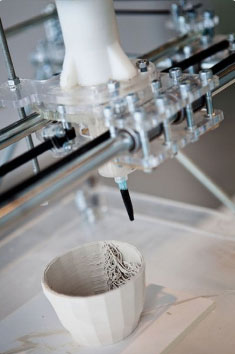A breakthrough in additive manufacturing technology in Graz, Austria, has made it easier to manufacture permanent magnets for small electronic components. The Graz team, in collaboration with the University of Vienna, Friedrich-Alexander University Erlangen-Nuremberg (FAU) and Joanneum Research, have successfully fabricated super magnets using a laser-based 3D printing process.
Permanent magnets are found in many electrical products, from motors and sensors to wind turbines and magnetic switching systems. Although they are ubiquitous, they still present certain manufacturing challenges. That is, permanent magnets are usually produced using sintering or injection molding, which limits them in terms of size and geometry.With the increasing miniaturization of electronic devices, a method is needed to produce super magnets with more complex geometries and smaller sizes. Therefore, additive manufacturing provides an interesting way for the production of super magnets.
The Austria-based research team recently reported that it has successfully 3D printed super magnet structures using magnetic powder materials and a laser-based AM process. The whole process has been refined to such an extent that the printed magnet shows a higher relative density and has a controllable microstructure. Both of these functions can effectively use materials because it means that we can precisely adjust the magnetic properties according to the application. Initially, researchers focused their efforts on 3D printing neodymium (NdFeB), a rare earth metal that can be used in many strong permanent magnets, such as computers, smartphones, etc.
Now, team member Arneitz (a doctoral student at the University of Graz) is exploring the possibility of 3D printing other types of magnets, such as iron and cobalt magnets (Fe-Co). By the way, these magnets may be more ecologically alternative to neodymium iron boron (NdFeB). NdFeB is a rare earth metal that requires a lot of resources and is difficult to recycle.The researchers also pointed out that in terms of performance, rare earth metals tend to lose their magnetic properties at high temperatures, while iron-cobalt alloys can maintain their magnetic properties up to 400 degrees Celsius.
"Theoretical calculations indicate that the magnetic properties of these materials can be increased by two or three times," Arneitz added. "Considering the shape flexibility provided by 3D printing, we believe that we can approach this goal. We will continue to work on this topic in collaboration with many other institutes to develop alternative magnetic materials for areas that do not require neodymium magnets. "




